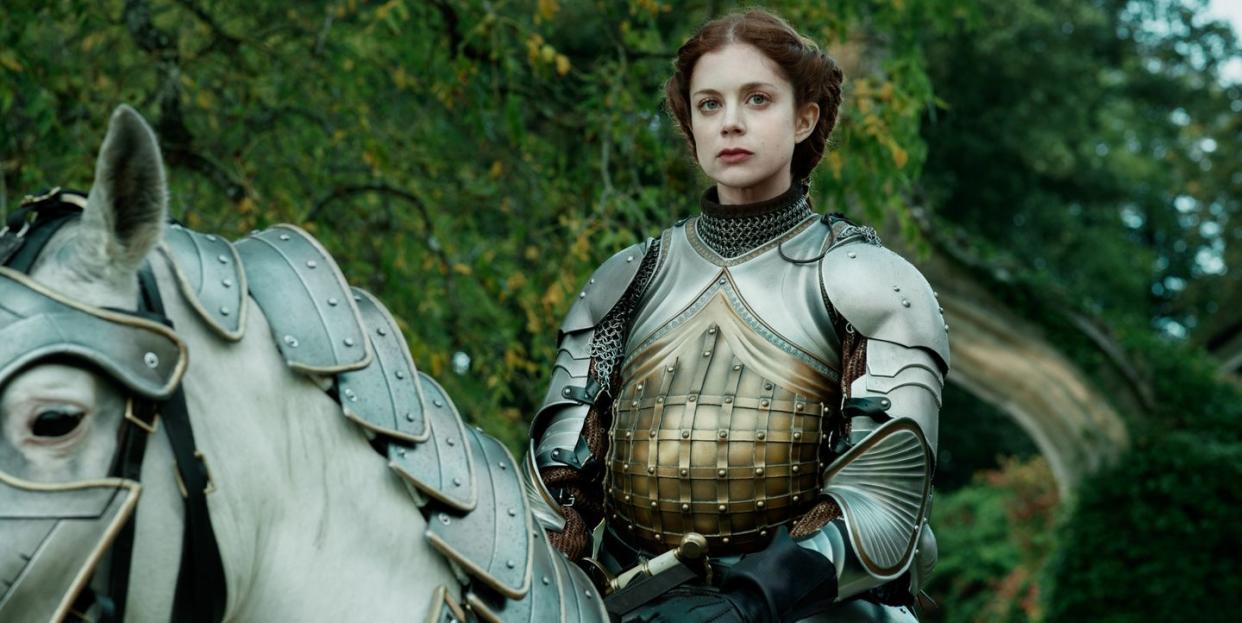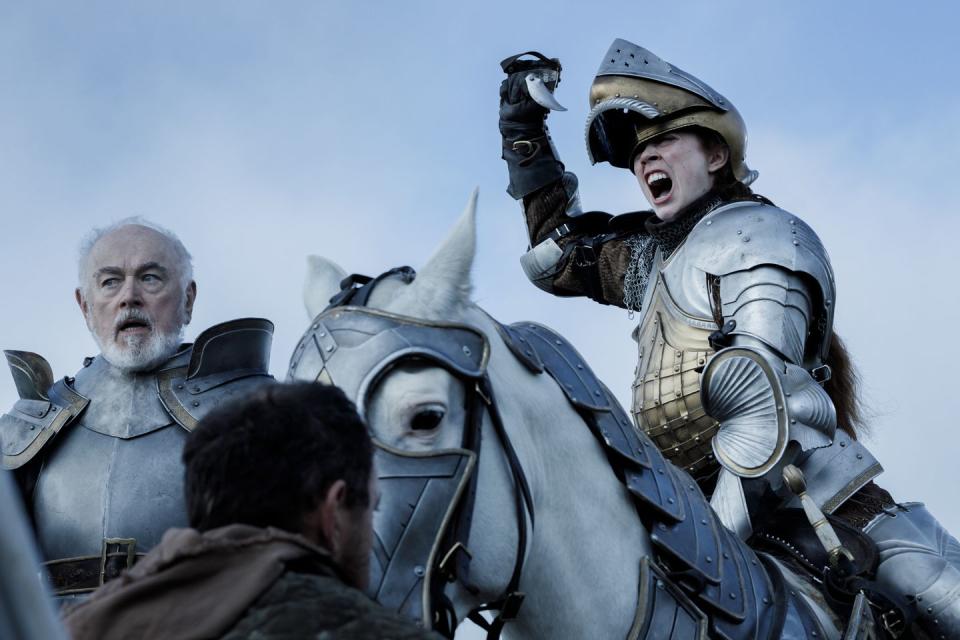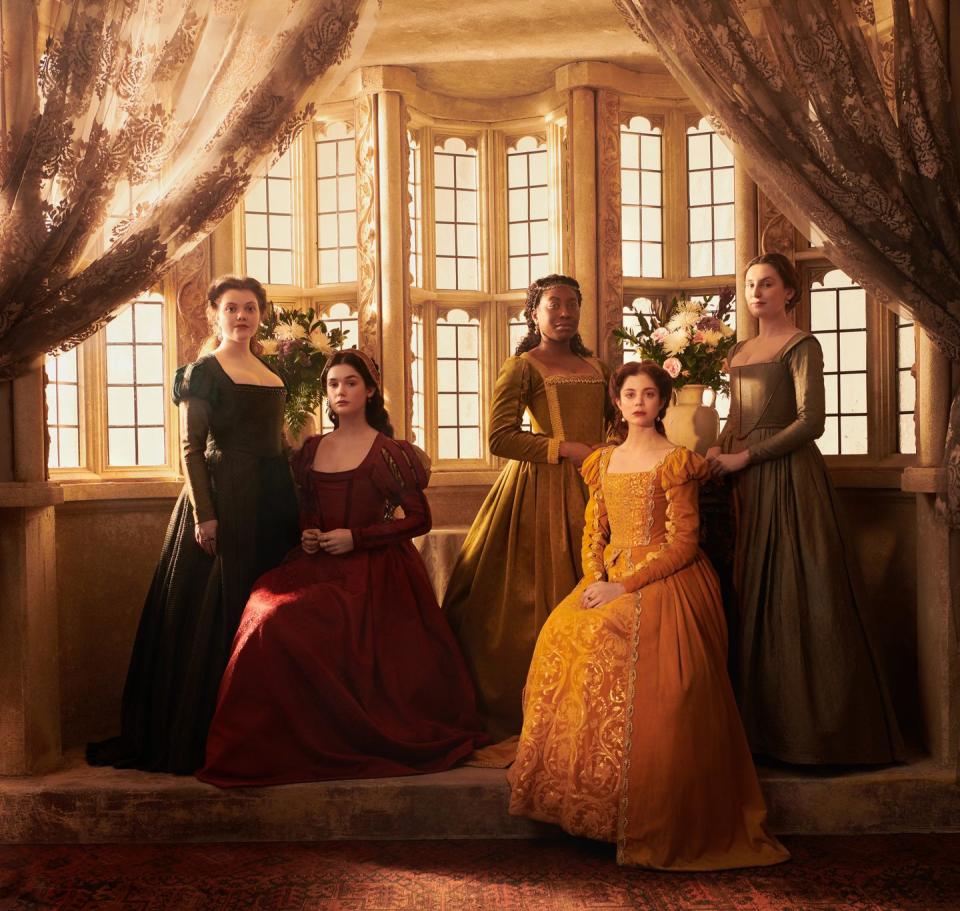The Spanish Princess Is Not 100% Historically Accurate, But That's Not the Point

- Oops!Something went wrong.Please try again later.
Early on in The Spanish Princess's second season, Catherine of Aragon rides into battle against the Scots, her pregnant belly cloaked in a shining suit of armor. It makes for a dramatic plot point, and a stunning visual, but according to historians, it never actually happened. It's the stuff of legend (and good television).
"As with much historical fiction, there’s truth in here, but it has been embellished to varying degrees," explains historian Tracy Borman, a Tudor historian and novelist whose latest book, Fallen Angel is out in November. "Catherine was certainly of warrior stock. Her parents were the ultimate 15th century power couple, and her mother Isabella spent most of her married life on military campaigns, often traveling many miles while heavily pregnant." But the specifics seen on screen aren't exactly how things played out in real life.
"Catherine may have been inspired by [Isabella's] example when in September 1513 she rode north in full armor to address her troops as they prepared to fight the Scots, despite being about eight months pregnant," Borman says. "But she didn’t lead her troops into battle."
Despite the historical inaccuracy, the scene's inclusion in the series wasn't a research mistake. Co-showrunners Emma Frost and Matthew Graham are keenly aware of their show's relationship with the past, and when they choose to bend the facts to better suit their script.

Frost has a self-described "particular view of so-called history."
"Any given history book says more about the person who wrote it and the time in which it was written, than it does about the so-called facts. Most history is a litany of white men being successful and begetting heirs and winning wars. Women's stories, the stories of people of color, anyone other than the kings and the powerful men, are not recorded. So what we have as a written document is incredibly one-sided," she says.
With The Spanish Princess, she endeavors to "stand on the shoulders of the kernels of the facts that we have."
"I think we allow those historical facts to be a springboard into telling a story that is vibrant, and also that always has to have a relevance for the 21st century audience, because those are the people we're making the show for," she explains.
That distinction is key. Frost and Graham are successful in their ambition to make a historical fiction fit for viewers' tastes the 21st century, and that is why the series is compelling, not because of how closely they hew to the facts. Because let's be honest here, no one wants to see an entirely historically accurate romance. (Among other reasons, personal hygiene in 16th century wasn't exactly sexy.)

The Spanish Princess smashes through the Bechdel test, showing Catherine and her companions discussing everything from matters of state to childbirth and infertility to religion and war. And there's only one scene in the whole season, Graham explains, that exclusively features men. "Everything is from the female perspective and has to be through that lens," he says.
This series tells the story of a woman before her time, a Queen with the beginnings of feminist ideals, living in a patriarchal society. And Graham and Frost's treatment of Catherine's experience is indicative of just how much has changed over the centuries. She is the center of this Tudor saga, not one line in a rhyme about Henry VIII's wives. But there's a reason her narrative continues to resonate today. Navigating the relationship between gender and power is as relevant in 2020 as it was in 1509.
"I think that's very interesting in a post-Me Too world, to signal that narrative of a woman grappling with how to have and exercise and maintain power, over her own life," Frost says.
"So I think, when you lean into history and when you look at the stories that exist, we notice things that feel relevant and lean into those more. But it's also history repeating itself. The same old issues do tend to go round."
You Might Also Like

